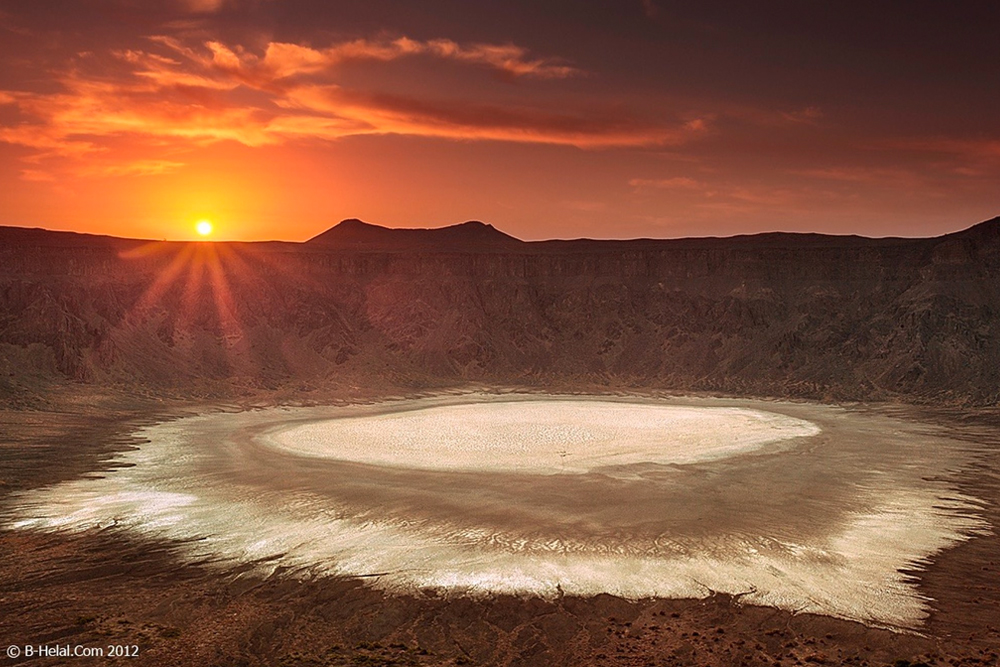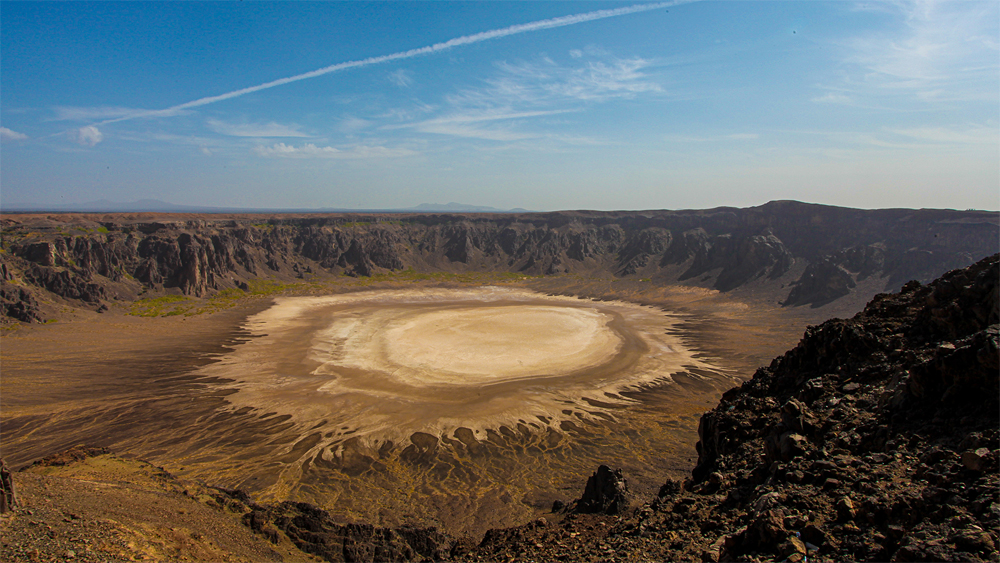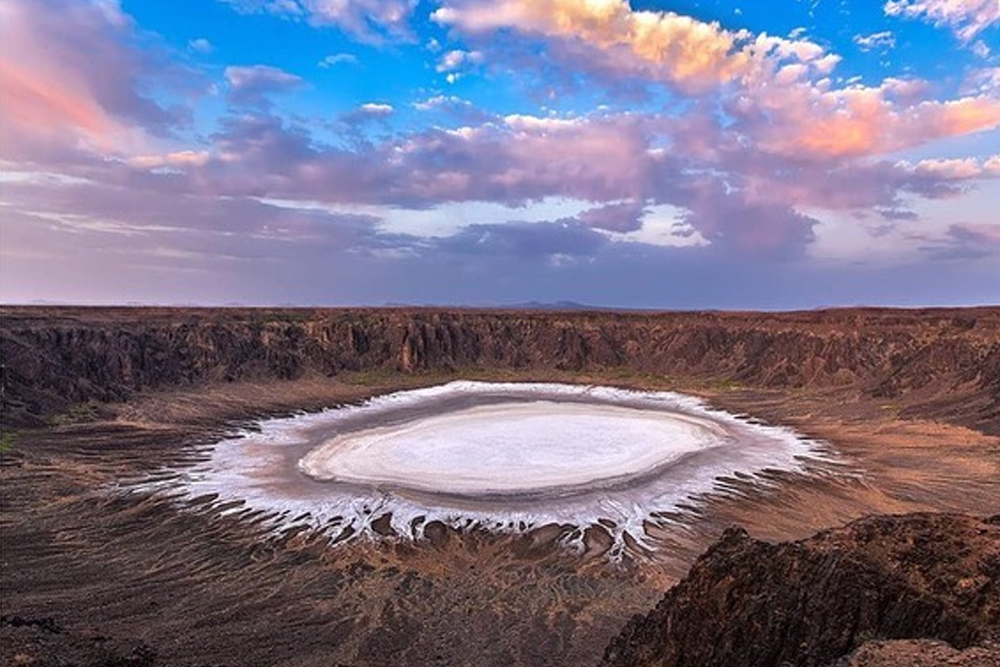
Image via Charismatic Planet
If you are looking for something that is out of this world, then you should check out Saudi Arabia’s renowned Al Wahba Crater, situated some 250 kilometers from the city Taif. Located in the middle of the desert, and measuring 1.3 kilometers across and 200 meters deep, there is no doubt that this is one of the Kingdom’s most dramatic natural wonders.
At first glance, Al Wahba Crater and the cliffs around it all look like something that resulted from a meteorite impact. But, take a closer look, and you might notice something more impressive. As geologists discovered in the 1960s, Al Wahba Crater is actually a maar crater. What does this mean? Maar craters are formed when a volcanic eruption occurs, with the magma coming in contact with underground water. As a result, we have a vibrant formation that resembles a gigantic quicksand, leaving visitors of the crater in complete awe. In addition, the bottom of Al Wahba Crater is covered in sodium phosphate, which, when it rains, gets pushed up to the surface, giving the location a mesmerizing milky appearance.

This natural phenomenon is impressive enough, but the locals do have a fascinating folklore about the crater's origin that add to its appeal. The story goes that there were two mountains named Tamia and Cotton. One night, a flash of lightning shone on Cotton's beauty, getting the attention of Tamia who became determined to uproot herself to be closer to her new love. However, her jealous mountain cousin, Shelman, shot her with an arrow and she fell into the ground. Tamia's fall, as the legend does, resulted to the creation of Al Wahba Crater.
As a whole, Al Wahba Crater is just a center piece of this awe-inspiring scenery. Obviously, there are the cliffs surrounding the crater, giving visitors an impressive panoramic view. But, not only that; there are patches of vegetation, mostly palms, at the northern area over the cliffs as well, which gives the scenery an enchanted greenery feels.

If you want to visit Al Wahba Crater, there are a few things to keep in mind. Descending to the crater will take over 45 minutes by hiking and 90 minutes to get back up. And, due to scorching afternoon heat, which can reach up to 50°C in the summer, it is best to visit in the morning or evening when the temperatures are much lower. Camping at night though is highly recommended for stargazing, an added incentive to visit Al Wahba Crater.

















